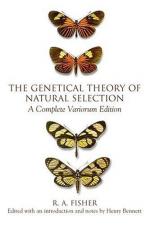|
This section contains 382 words (approx. 2 pages at 300 words per page) |
World of Scientific Discovery on Ronald Alymer Fisher
Fisher made many important contributions to the field of statistics. Born in London, England in 1890, Fisher attended Caius College in Cambridge. He graduated in 1912, specializing in mathematics and theoretical physics. After graduation he spent an additional year in Cambridge studying statistical mechanics and the theory of errors, subjects in which he was particularly interested. Following the outbreak of World War I, Fisher attempted to enlist, but his poor eyesight exempted him from military duty. During the next six years he worked at several jobs, including investment broker, high school teacher, and farm laborer, but in 1919 he found his niche at the Rothamstead Experimental Station, where he became a one-man statistics department. It was Fisher's job to analyze a huge backlog of weather data accumulated over 60 years--a seemingly impossible task when faced with traditional statistical analysis methods.
Fisher originated the idea of using small samples for his random sampling distributions, a highly successful concept that provided a completely objective, yet valid analysis. In the following years he applied similar methods to determine exact distributions of other statistical functions, including regression coefficient and discriminate functions. Fisher also developed new methods for using statistics in experiments, which included the analysis of variance, co-variance, and multivariate analysis. In addition, he made improvements to several existing statistical functions. In 1925 Fisher released Statistical Methods for Research Workers, a book that revolutionized research methods in many fields, particularly genetics and agriculture.
While at Rothamstead, Fisher dabbled in his other passion--genetics. He bred poultry, mice, snails, and other creatures and published his findings in several papers that contributed to scientists' overall understanding of genetic dominance. His study of human blood types and the formation of a blood-grouping department at the Galton Laboratory in 1935 were of significant aid in clarifying the inheritance of Rhesus blood types among humans.
Fisher left Rothamstead in 1933 to become professor of eugenics at University College in London. Ten years later he moved to Cambridge University as Balfour Professor of Genetics. In 1959 Fisher retired from his position and moved to Australia, although he continued to work in the Division of Mathematical Statistics of the Commonwealth Scientific and Industrial Research Organization. He died in Adelaide, Australia in 1962. Fisher's many contributions to data collection and interpretation methods symbolized the beginning of a new era in statistical analysis.
|
This section contains 382 words (approx. 2 pages at 300 words per page) |


